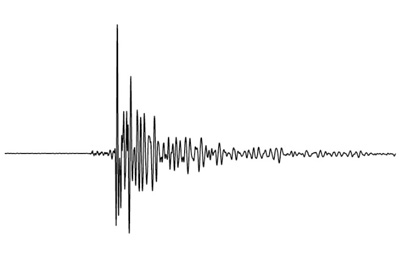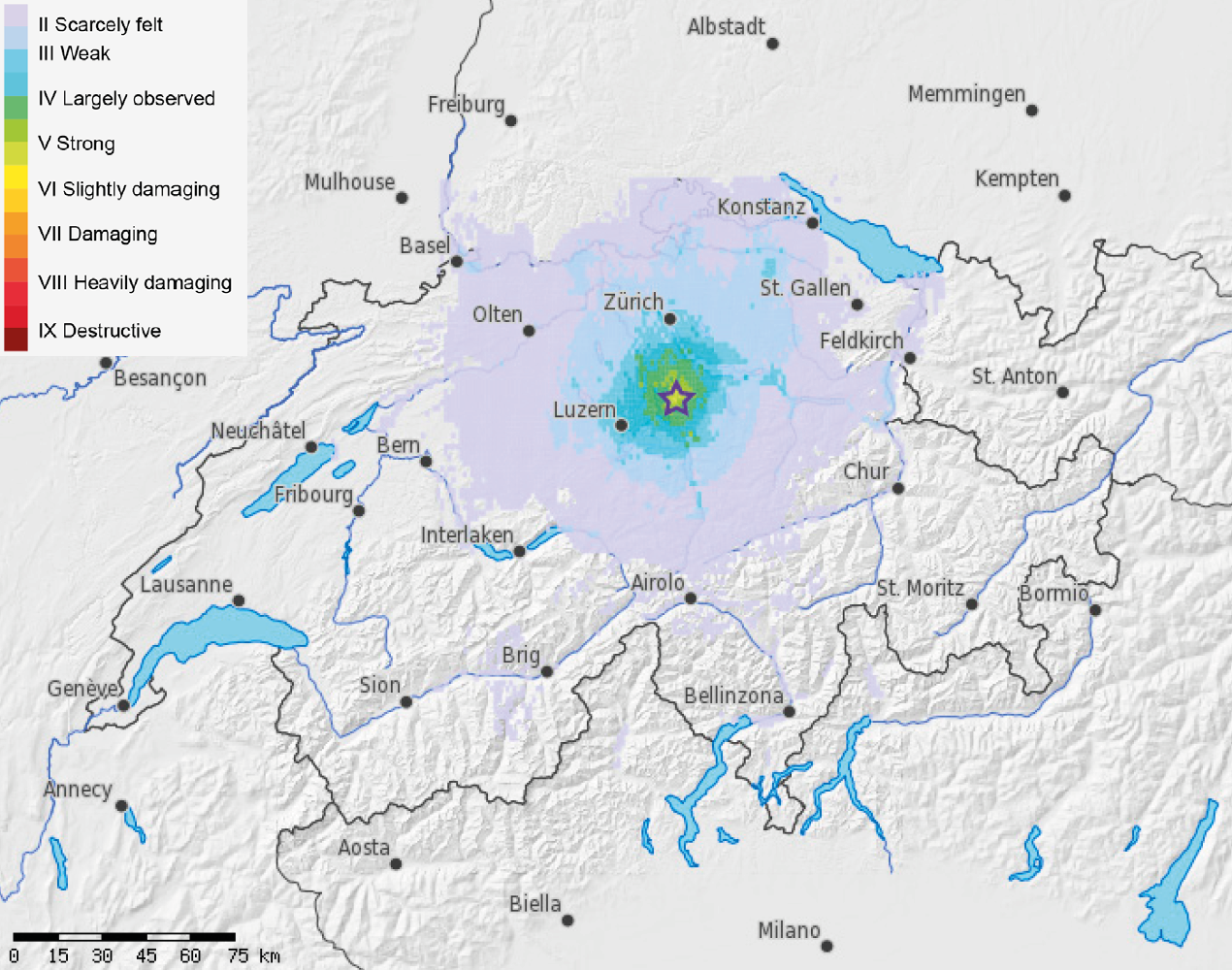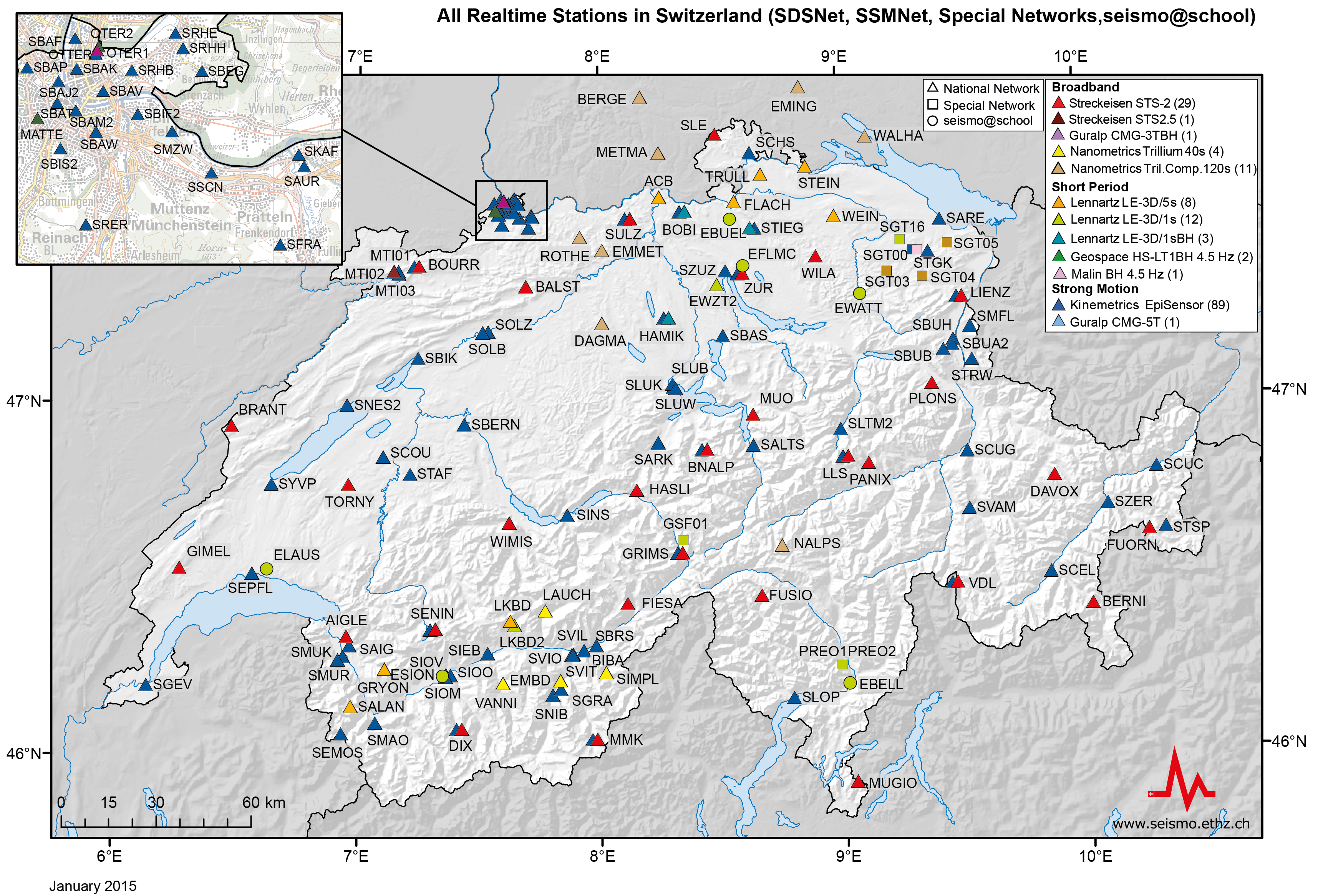Realtime Monitoring
The dense Swiss seismic network provides realtime information on ground shaking across Switzerland. The realtime monitoring group operate the automatic software that finds and characterises earthquakes within 10’s of seconds after they occur, and provides alerts to relevant authorities and the public. Other seismological tools we provide include ShakeMaps that show how ground shaking was produced across the country. The group also actively researches earthquake early warning tools.
Figure: Waveform of the earthquake in Zug, 2012

Measuring Earthquakes - The SED Seismic Network
The Swiss Seismological Service (SED) operates a dense national seismic network with about 200 sensors spread across the entire country. Sensitive stations are located in isolated regions in order to measure very small earthquakes far below the threshold of human perception, and strong motion sensors are located in many of the towns and cities so as to understand the hazard in the areas at highest risk, and to measure damaging motions if they occur.
Finding Earthquakes - Data Processing
Waveform data from these stations arrives continuously at our processing hub at ETH Zurich within 1 to 2 seconds of being recorded. The realtime monitoring group maintain the operational software that automatically detects, locates and characterises any earthquakes that occur in and around Switzerland, and will also distribute alerts to the public and authorities if these events are large enough. Typically an alert is sent out within 1 to 2 minutes after occurrence.
Improving our understanding of earthquakes and their effects
The realtime seismology group also provides a number of products to help seismologists understand an event. A moment tensor is produced from a broadband waveform inversion that provides an independent magnitude estimate as well as describes the style of earthquake faulting. Automatically generated ShakeMaps use the observed ground motions at each seismic station to estimate the intensity of ground motion experienced across the country. In the case of a major event or swarm, temporary stations are often deployed to monitor the aftershock sequence, which can improve our understanding of the seismotectonics and observed patterns of ground shaking.
Research in realtime seismology
Once an earthquake begins, the initial energy reaches the closest stations first. Even though Switzerland is small, it can take up to a couple of minutes for energy from a large earthquake to pass across the network. Of course the best characterisation of the earthquake is made once all information is available, but since there is a need to be situationally aware fast, we try to provide reliable information as soon as possible. Our group focuses on trying to provide reliable earthquake information as fast as possible. We explore techniques for detection, location, magnitude and finite fault estimation that can use only the first arriving energy from the stations closest to the earthquake. Coupled with the modern seismic network we operate, in the rare case of large earthquakes, these tools have the potential to provide alerts to regions that will experience strong shaking before it actually occurs – Earthquake Early Warning. Our goal is to provide a continuum of continually more precise information about the earthquake as information arrives.

